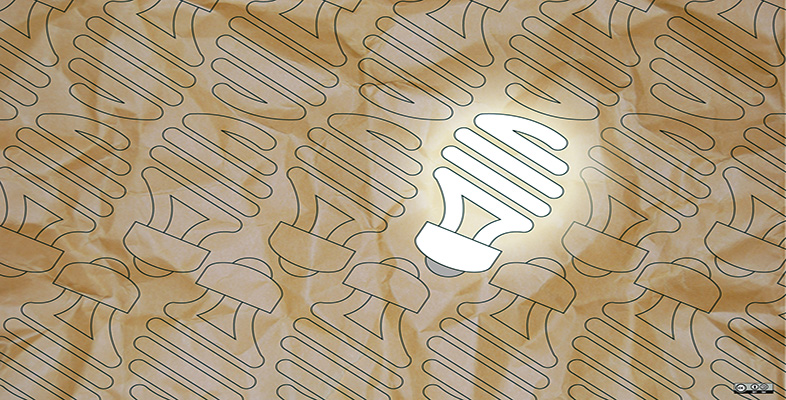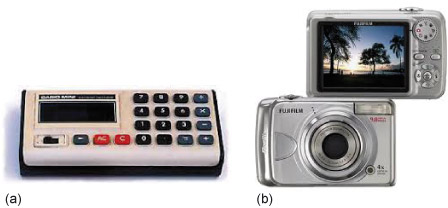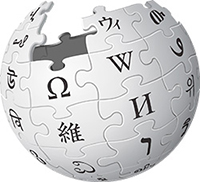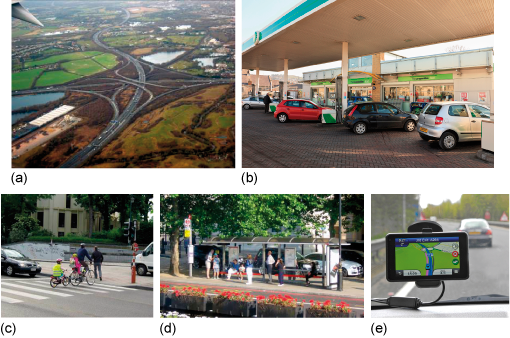1.2 Outputs of innovation
Innovations work their way into reality in a variety of forms. In the preceding section, we mentioned three types of outputs of innovation: products, services and systems. Let us start by thinking about how products, services and systems differ and how they are similar. We put these questions to Tim McAloone, Professor of Product/Service-Systems at the Technical University of Denmark.
Activity 2 Describing the outputs of innovation
In the following video, Tim McAloone defines products, services and systems. Watch the video, and using Tim’s definitions identify three examples of products, of services and of systems. Use the textbox to record your answer.
Transcript: Video 1 Interview with Tim McAloone of the Technical University of Denmark
Answer
These are examples that I thought of, but yours are likely to be different:
| Product | Service | System |
|---|---|---|
| A pair of scissors | A haircut | A beauty salon |
| A bicycle | Public bicycle hire scheme | A city-wide bicycle system |
| A movie | On-demand internet streaming | A cinema |
Discussion
My answers follow Tim’s definitions for products, services and systems, which are:
A product is the result of a development process. It is something that is designed and ownership is transferred. The example Tim mentions is buying a lawnmower.
A service is an activity that is provided on your behalf. So in Tim’s example the activity would be a grass cutting service. A product is involved (the lawnmower) but this is part of the activity that is undertaken.
A system is where there is a collection of infrastructure, people with roles, which call on products and services. So grass cutting may be part of a service system that is provided to a neighbourhood or town.
Tim picked up the point that businesses often call services ‘products’. That may be just business speak, but not all products are necessarily tangible. If I buy a financial product (say an investment package), this does involve the design of the mix of investments concerned and a change of ownership.
Overall these three categories are useful, but we should not get too hung up on the boundaries between them. Indeed some really important innovations are those that take place on the boundaries of meaning between product, service and system.
Now that we have defined products, services and systems, we can move on to explore some examples of product, service and system innovation.
Product Innovation
When we think of innovation we often alight upon product innovations – objects. The vacuum cleaner and electric light bulbs are examples of such product innovations, and in general we can define the product innovation process as
the introduction of a new good or a new quality of a good.
(Schumpeter, 1939)
Notice that the idea for the product does not have to be new. For example, when pocket calculators were introduced in the 1970s, the idea of using a machine to carry out arithmetic operations was not new. Mechanical calculating machines have been around since the invention of the abacus, around 2000 BC, and automated calculating machines were available in the 17th century. But, pocket calculators, such as the example in Figure 2a, were an innovation because they used the invention of the microprocessor to introduce new functionality, to make the design more user friendly, and to make them easier to manufacture and, eventually, cheaper to buy.
Similarly, the digital camera, as illustrated in Figure 2b, took a while to become established as it initially offered little advantage over film cameras. But over time people realised they offered different functionality from a traditional camera, allowing many more pictures to be taken without the need for film. Also, improvements in computing technology allowed for reduction in size, increase in functionality and decrease in cost, which further encouraged diffusion. The inclusion of a digital camera on mobile phones accelerated this effect further, and today digital cameras are ubiquitous.
Service Innovation
Our society and economy is increasingly built on services, and so innovations in service and in service design are extremely important. Hairdressing and gardening are examples of quite traditional service offerings, but newer, more exciting examples are emerging every day, with examples such as business services, internet grocery delivery services, energy services and new transport ticketing services such as the Oyster smart card in London. In general, the service innovation process can be defined as the introduction of new or improved service offerings.
As with product innovation, a service innovation can be a new type of service but is often an improved delivery or performance of an existing service. Broadly speaking, service innovation involves (re)configuring the elements necessary to provide services and/or integrating new ones. For example, a new information system may be integrated in a service to manage bookings.
Unsurprisingly, much service innovation is undertaken in what is classified as the traditional service sector, including finance, insurance, real estate, transport, and communications. However, it is important to realise that service innovation is not confined to the traditional service sector. There is also a growing trend for manufacturers to use their products as platforms for various service innovations, such as extended warranties for household appliances and servicing (Howells, 2002). In such instances, manufactured goods are not offered to consumers in their own right but rather as part of a package that includes service components. These often focus on satisfying customer demand for outcomes and results (e.g. reliable central heating). Also, the ubiquity of the internet and mobile devices is introducing opportunities for service innovation, for example music and video internet streaming, holiday planning and booking, navigation, and information retrieval, such as Wikipedia, the free, online community-created, instantly updated encyclopaedia.
System Innovation
In reality, few innovations stand alone. Most only work when they are embedded within systems. For example, cars and trains do not make much sense in the absence of roads and rails and the fuelling systems for them. That is why there are widespread problems in introducing hydrogen fuel cell cars due to the lack of a nationwide fuelling system. Systems are collections of various elements including people, products, services and infrastructures, e.g. railways, roads, IT networks. Systems include services and differ from them as they are typically based on a larger collection of elements and satisfy societal needs for functionality.
Activity 3 Identifying systems
Think about making a trip to a nearby town. What systems are involved in making this trip? The following photos may provide some clues – but work it through for yourself, and use the text box provided to record your ideas.
Answer
Your answer might involve a number of systems. If you travel by road (either by car, bus or cycling) it involves the road system and its controls (traffic lights, enforcement, emergency services, etc.). There is a parallel for the rail system, e.g. tracks, signals, railway staff and the scheduling of services as shown in a timetable. For public transport there may be information and ticketing systems; for a car you may use a GPS system to guide you – and even a printed road atlas has a system behind the mapping involved.
Systems do not simply exist. Instead they were designed, introduced and developed over time. For example, to make electric lighting work, Edison set about developing an urban electricity generation and distribution system (McPherson, 2013). Generally, the system innovation process can be defined as
the introduction of new or improved socio-technical systems that fulfil societal functions, e.g. for transport, communication, housing.
(Adapted from Geels (2002) after Hughes (1983))
Systems are often quite complex. While systems include elements such as infrastructures, they also embody ways of doing things. For example, the Highway Code sets out the formal rules of the road and is needed to enable vehicles to travel safely. This helps explain why such systems are often termed socio-technical systems. Systems involve various technical elements such as products and infrastructures as well as human operators who follow social rules. Those rules may be laws, or they may just be accepted practices and behaviours. System innovation therefore often involves deep structural change, not only in things but in our everyday practices.



